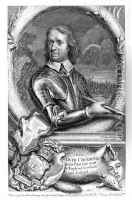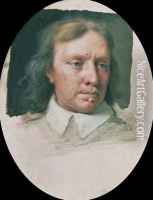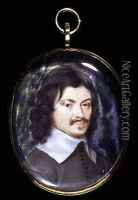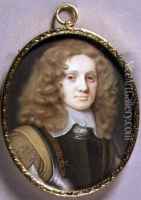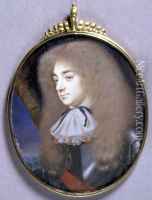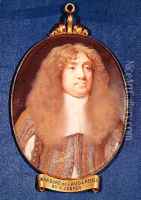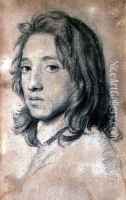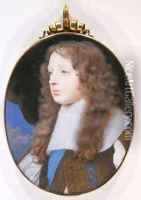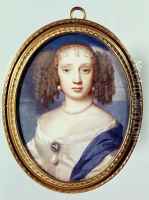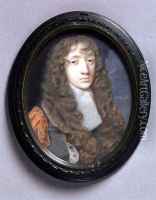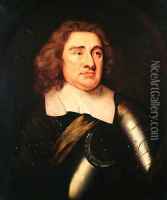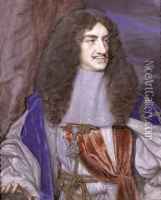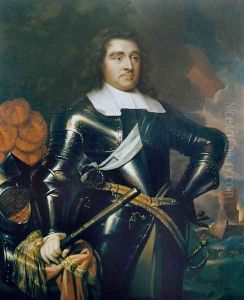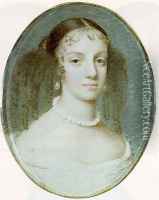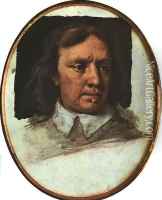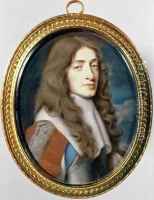Samuel Cooper Paintings
Samuel Cooper was a distinguished English miniature painter born in 1609. Renowned for his exquisite portrait miniatures, Cooper's work is celebrated for its delicate detailing, capturing the essence of his subjects with remarkable precision and beauty. He was born into an era that was witnessing the flourishing of miniature painting, a form that was highly popular among the aristocracy and royalty of the time. Cooper's talent elevated this art form to new heights, making him one of the most sought-after portraitists of the 17th century.
Cooper's early life is somewhat obscure, but it is known that he was born in London, into a family with artistic inclinations. His uncle, John Hoskins, also a notable miniaturist, is believed to have been a significant influence on young Samuel, likely providing his initial training in the arts. This familial connection to the art world of the time laid a solid foundation for Cooper's future career. By the 1640s, Cooper had established himself as a leading figure in the world of miniature painting, capitalizing on the growing demand for personal and intimate portrayals.
The period during which Cooper worked was marked by significant political and social upheaval in England, including the English Civil War and the Commonwealth period. Despite these tumultuous times, Cooper's career flourished. He painted portraits of many key figures of the era, including Oliver Cromwell, a testament to his standing as a portraitist of high repute. Cooper's ability to capture the character and personality of his sitters, coupled with his exquisite skill in rendering the fine details of their attire and surroundings, earned him widespread acclaim.
In 1660, with the restoration of the monarchy, Cooper's talents continued to be in high demand. He painted Charles II and many members of his court, demonstrating his adaptability and the broad appeal of his artistry across the political spectrum. Cooper's work from this period reflects the opulence and grandeur of the Restoration court, with richer colors and more elaborate compositions.
Samuel Cooper passed away in 1672, leaving behind a legacy that would influence generations of miniature painters. His contributions to the art of miniature painting were not only in the technical advances he made but also in the way he captured the spirit of his time, providing a window into the personalities and fashions of the 17th century. Today, Cooper's miniatures are held in high esteem, housed in museums and private collections worldwide, celebrated for their beauty, technical skill, and historical significance.
